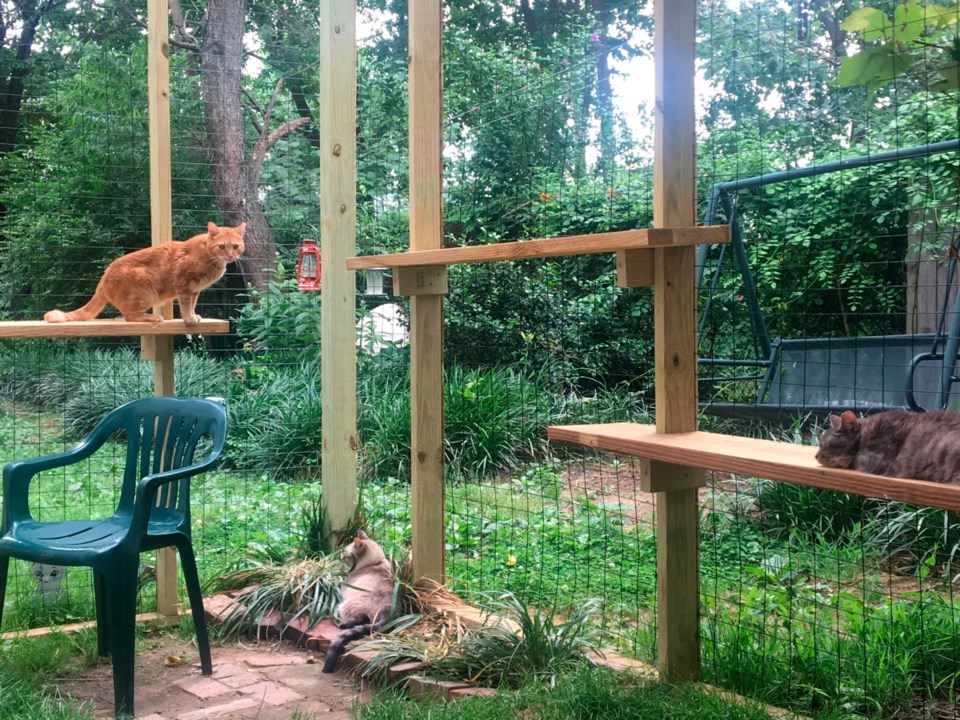Although some cat owners still let their pets roam free, the felines are a leading cause of bird mortality, and bird and cat proponents agree that both species are safer if cats are reined in.
The good news is that cat owners are, increasingly, keeping their felines enclosed.
“The cat realm is catching up to the dog realm in this,” says Danielle Bays, community cats program manager for the Humane Society of the United States. The number of cats kept indoors has increased dramatically in recent years, she says.
Cats kill an estimated 2.4 billion birds in the United States and Canada every year, according to researchers from the Smithsonian and the U.S. Fish and Wildlife Service. Worldwide, they’ve contributed to the extinction of dozens of species of birds, researchers say. Besides birds, cats also are a serious threat to many small mammals and other wildlife.
“The single best way to protect birds from cats is to keep cats indoors. This is safe for birds and other wildlife as well as safer for the cats. Indoor cats are less susceptible to disease, vehicle collisions or attack from a larger predator,” says John Rowden, director of community conservation for the National Audubon Society.
Bays says the Humane Society doesn’t see it as a cat-vs.-bird debate, but as a win for both groups.
“We promote keeping cats indoors, on a leash or in an enclosure. We find more and more people opting for walking cats on a leash, or putting in a catio,” says Bays.
Catios are screened-in outdoor enclosures, often featuring shelves or ramps, intended as safe outdoor areas for pet cats. Catios vary widely in size and style, and some even have room for people, too. There are catio kits and building designs available online.
Bays says catios are a good option for cats who dash out the door at every opportunity.
They don’t have to be fancy. “Even a window-box catio can be helpful,” she says. “There are also portable, pop-up catios, and catios for apartment balconies.”
When Bays and her co-workers built a catio in her backyard, she says, the neighbours were fascinated and joined in to help.
“There are still some people who insist their cats should roam free. But it’s important to remember that people also used to let their dogs roam free. It’s no longer common for pet dogs, and cat owners are also coming around to that,” Bays explains.
“We don’t allow dogs to be feral, and that goes for cats as well,” adds Grant Sizemore, director of invasive species programs at the American Bird Conservancy, a non-profit organization devoted to conserving native birds and their habitats.
The organization’s national Happy Cats Happy Birds initiative is one of a number of national resources designed to benefit both populations. The initiative focuses on outreach, education and advocacy to keep cats contained.
The Humane Society’s Community Cats Program also works to reduce the number of cats roaming wild.
The program is designed to “humanely trap, neuter and return” stray cats to the area where they were picked up. The cats are given an ear clip — a visual identifier that they’ve been spayed or neutered and vaccinated.
“The idea is that over time, the population will be reduced humanely, protecting wildlife as well as cats,” Bays says.
“When we get people in a community involved in monitoring the situation, we can spot kittens and new cats as soon as they show up.”
She urges anyone who spots stray cats to contact a shelter or the Community Cats Program.
In addition to keeping cats from roaming, Rowden says people can help native bird populations by planting native plant species and keeping outdoor lighting to a minimum, especially during seasonal migrations.
“Audubon’s Plants for Birds database is a tremendously helpful resource for anyone who wants to help birds. Simply by putting in their zip code, users can get a list of plants native to that region, along with the birds they’ll attract and shelter, as well as local Audubon resources to help with any questions or plant sourcing,” he explains.



